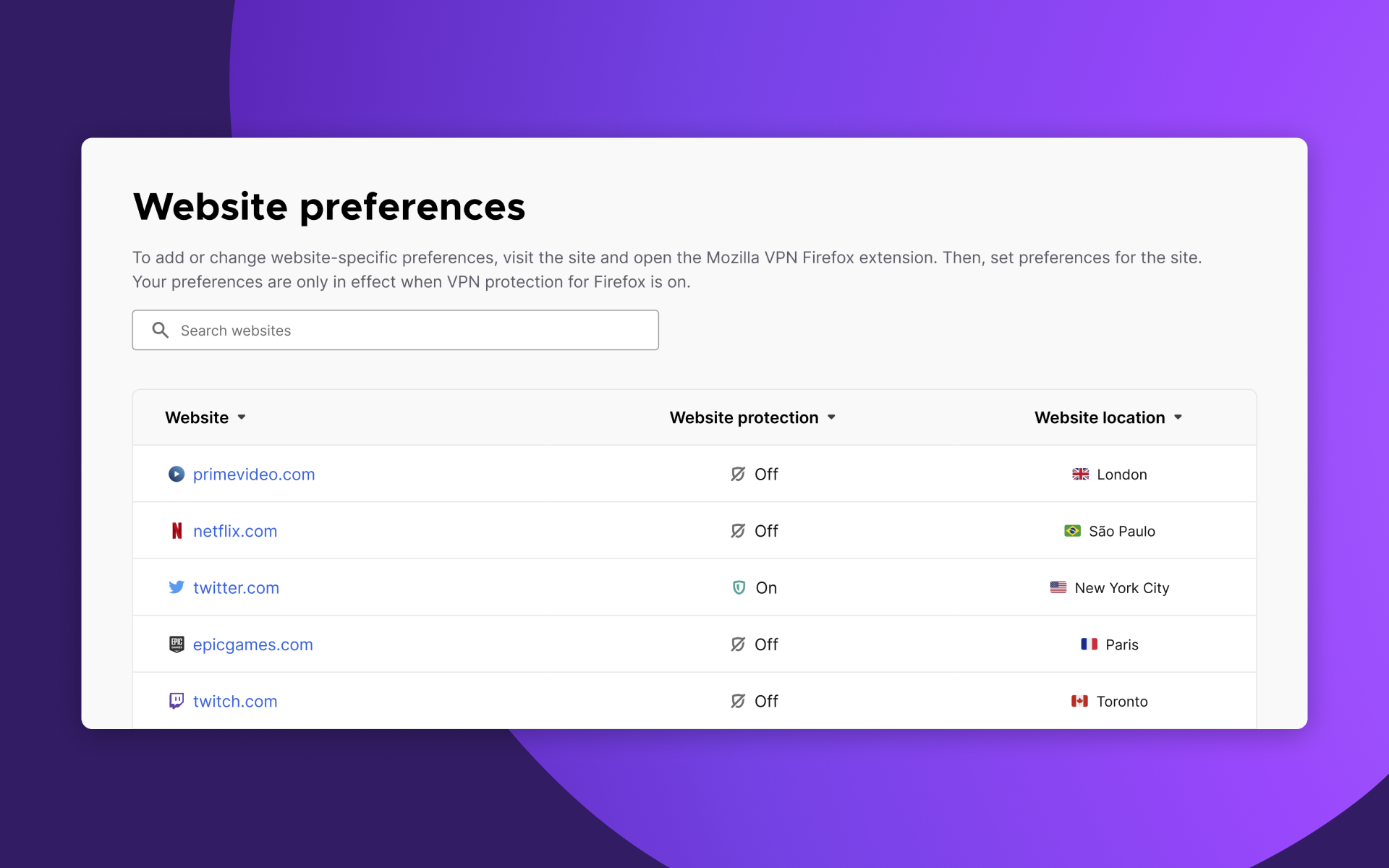Mozilla VPN users can now set per-site preferences through an official Firefox extension. If you want to bypass your VPN on certain websites or only spoof a foreign location when visiting Netflix, the extension will help you do so.
Most VPN apps are totally rigid. You turn on the VPN, and all of your web traffic is tunneled through a single remote server. This can lead to some annoying situations—you may need to completely disable your VPN just to visit Amazon, or jump to a slow server to access content that isn’t available in your region. Of course, you’re also responsible for re-enabling your VPN or switching it back to a faster server, which only adds to the frustration.
Split tunneling, which lets you bypass or customize VPN usage on a per-app basis, can alleviate this issue. But you need to use at least two web browsers (or Firefox containers) to take advantage of split tunneling in this context. And if you use two web browsers—one that bypasses your VPN and another that doesn’t—you run the risk of making silly mistakes that undermine the purpose of your VPN. You may accidentally open a tracker-filled website in your VPN-bypassed browser, for example.
“One of our biggest takeaways from speaking with users: People don’t just want security — they want control. Traditional VPNs force users to apply the same settings across all websites, but real-world browsing isn’t that simple. Our goal is to make privacy tools more practical — so you can stay secure without the usual trade-offs … No more toggling your VPN on and off just to access certain sites. A clear indicator in the URL bar shows when a site isn’t using VPN protection, making it easy to turn it back on if needed.”
The introduction of Mozilla VPN’s Firefox extension eliminates these concerns. If you don’t want to use a VPN when visiting Amazon, just click the Mozilla VPN extension in your browser and set your preference—no other websites will be affected. You can also select a preferred VPN server for individual websites, meaning that you can access one site from a Korea server and another from a U.S. server within a single browser session. This makes location spoofing a breeze, especially for forgetful people who regularly run into the problem of “oops, everything is slow because I’ve been tunneling through a server in a foreign country for the past month.”
Mozilla VPN’s new per-site controls are fairly unique. The Proton VPN browser extensionoffers website-specific split tunneling settings, and Surfshark has a whitelist feature, but that’s about it. Mozilla is rarely mentioned in discussions about VPNs, yet it managed to introduce an extremely useful feature that’s sure to attract some customers.
Unfortunately, the Mozilla VPN Firefox extension is only available on Windows, though macOS and Linux versions are in development. This extension also requires the Firefox browser, obviously.
And Mozilla does not host its own VPN servers. Mozilla VPN is just a custom frontend for Mullvad VPN—it’s a good option for those who want to support Mozilla, and it’s slightly more user-friendly than Mullvad, but it places customers in the awkward position of trusting two companies instead of one. Both Mozilla and Mullvad boast strict no-logs policies, but Mozilla is U.S.-based and naturally has fewer legal protections than Swedish Mullvad. (If you’re just using a VPN to dodge trackers and spoof your location, I wouldn’t worry about this too much. Still, it’s worth mentioning.)
Mozilla VPN costs $10 a month, but you can save 50% by signing up for the $59.88 annual subscription. It works on all major operating systems, including macOS and Linux, though the Mozilla VPN browser extension required for per-site preferences is currently limited to Firefox on Windows.

Mozilla VPN
A fast VPN from the same company responsible for the Firefox browser.
Source: Mozilla





